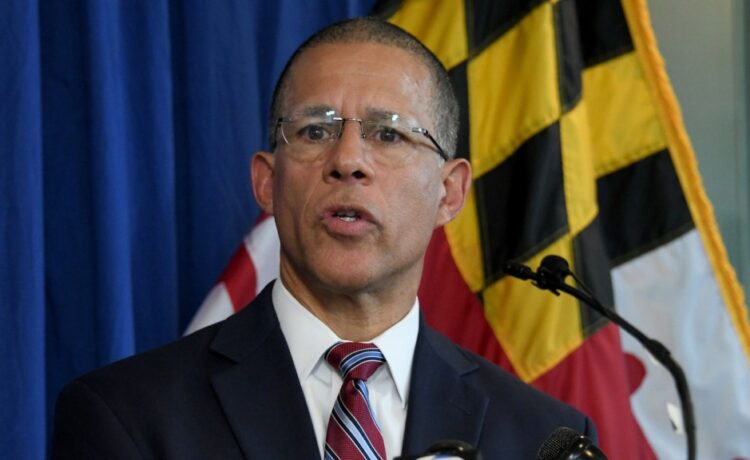The Maryland Attorney General’s Office is seeking an even split between the state and local jurisdictions for an upcoming opioid settlement with the grocery chain Kroger, marking a change from how previous opioid settlements were divided.
The office proposed a 50/50 split for the settlement, which would include $1.2 billion for state and local governments over 11 years that would be divided among 33 states where Kroger has stores.
Previous opioid settlements, including Maryland’s portion of a $26 billion global settlement with Johnson & Johnson and three opioid distributors, have been split differently, with 70% of the funds going to local jurisdictions and 30% staying with the state per an agreement between the state and local subdivisions.
The suggested 50/50 split will be a topic of discussion at the Maryland Association of Counties’ summer conference, which began Wednesday, said Michael Sanderson, MACo’s executive director, who confirmed the state’s proposal.
“It will be before county decision-makers this week,” Sanderson said.
The Attorney General’s Office declined to comment on the proposal. In a statement, spokesperson Jennifer Donelan said the office “will continue to work with our county and municipal partners in the Kroger opioids settlement matter.”
Counties and local governments have until Sept. 11 to sign on to the Kroger settlement.
Distribution of opioid settlement money varies widely from state to state. Some states split the money, which is primarily supposed to be used to abate the opioid crisis, evenly between state and local governments. Others keep most of the money in state coffers.
In Maryland, 25% of the money from previous opioid settlements has gone directly to local governments, and 15% has gone directly to the state. The other 60% is allocated to a Targeted Abatement Fund, the majority of which is distributed to local governments through a state-run grant program. In all, 70% of the total opioid settlement funds are intended to go to Maryland’s local governments and subdivisions.
The national Kroger settlement proposes a default 50/50 split between state and local governments, but that is not a requirement of the deal. States could choose to distribute the money differently. Other settlements have proposed different default distributions.
It’s not clear whether the 50% would go to local governments directly or in the form of grants under Maryland’s proposed split. The Attorney General’s Office declined to comment when asked if it will seek a 50/50 split between the state and local jurisdictions for any future opioid settlements.
“Based on what we’re seeing as trends across the country, it’s so individualized to the ecosystem of each state,” said Sara Whaley, the program manager of the Bloomberg Overdose Prevention Initiative at Johns Hopkins who recently agreed to advise Baltimore City on its use of opioid settlement funds.
“I think it really just depends on how much flexibility we want to give to the local jurisdictions,” Whaley said. “They’re closest to what is happening in their communities so they have that level of expertise that the state doesn’t necessarily have. But on the flip side, there’s also having that infrastructure and accountability to a system that has the infrastructure to really track all of this.”
The opioid settlements with companies that marketed or distributed painkillers have sent an influx of cash to communities struggling to deal with an addiction and overdose crisis. The money has also led to controversy; some states have put it toward law enforcement, while some advocacy groups have argued it should only go to public health measures.
Transparency and tracking the money is a key conversation surrounding opioid settlement money right now, Whaley said.
“That’s something we talk about a lot with opioid settlement funds,” she said. “Does the public have access to how much money jurisdictions have received, how they are planning to make decisions and what decisions are actually made.”
Originally Published:













